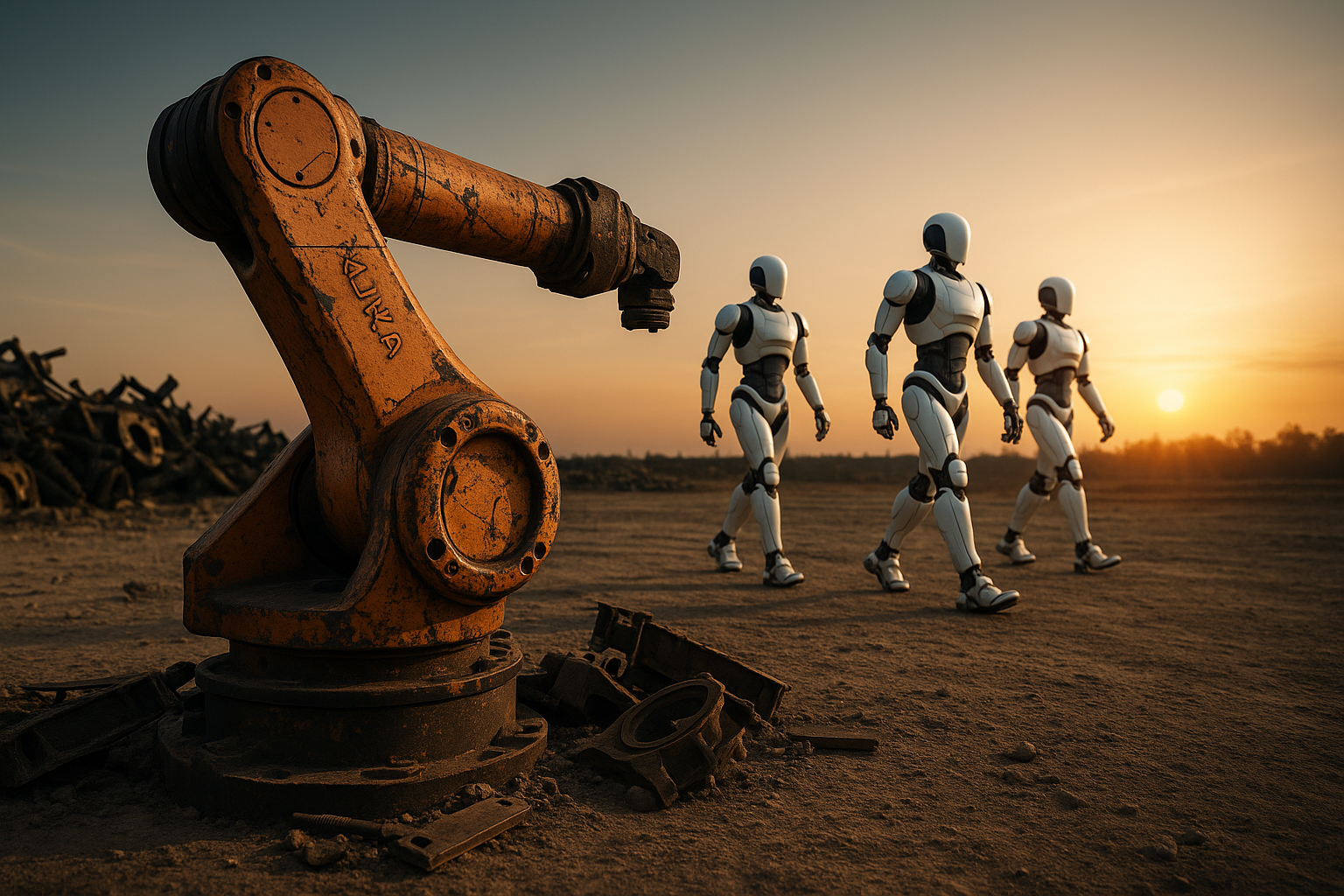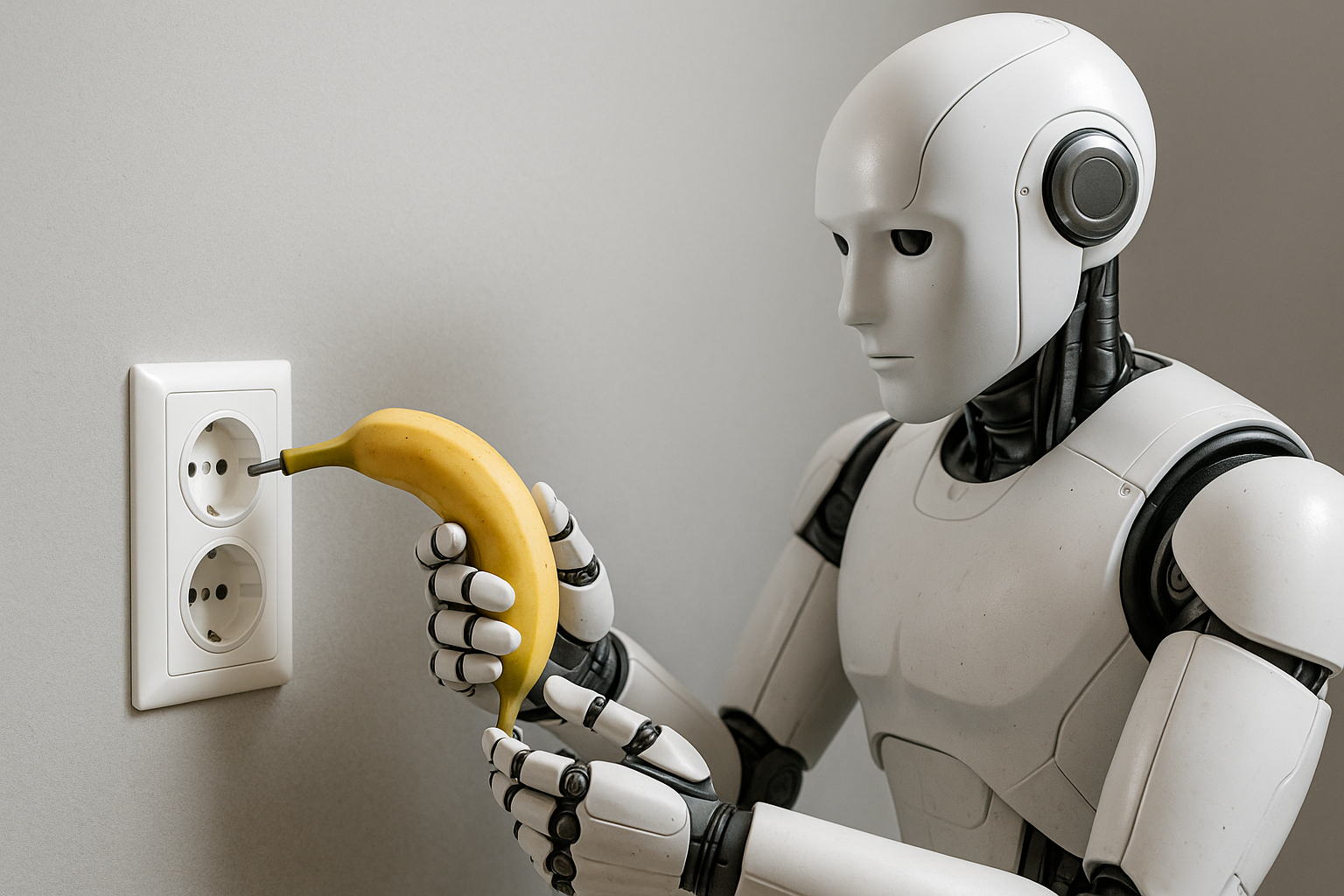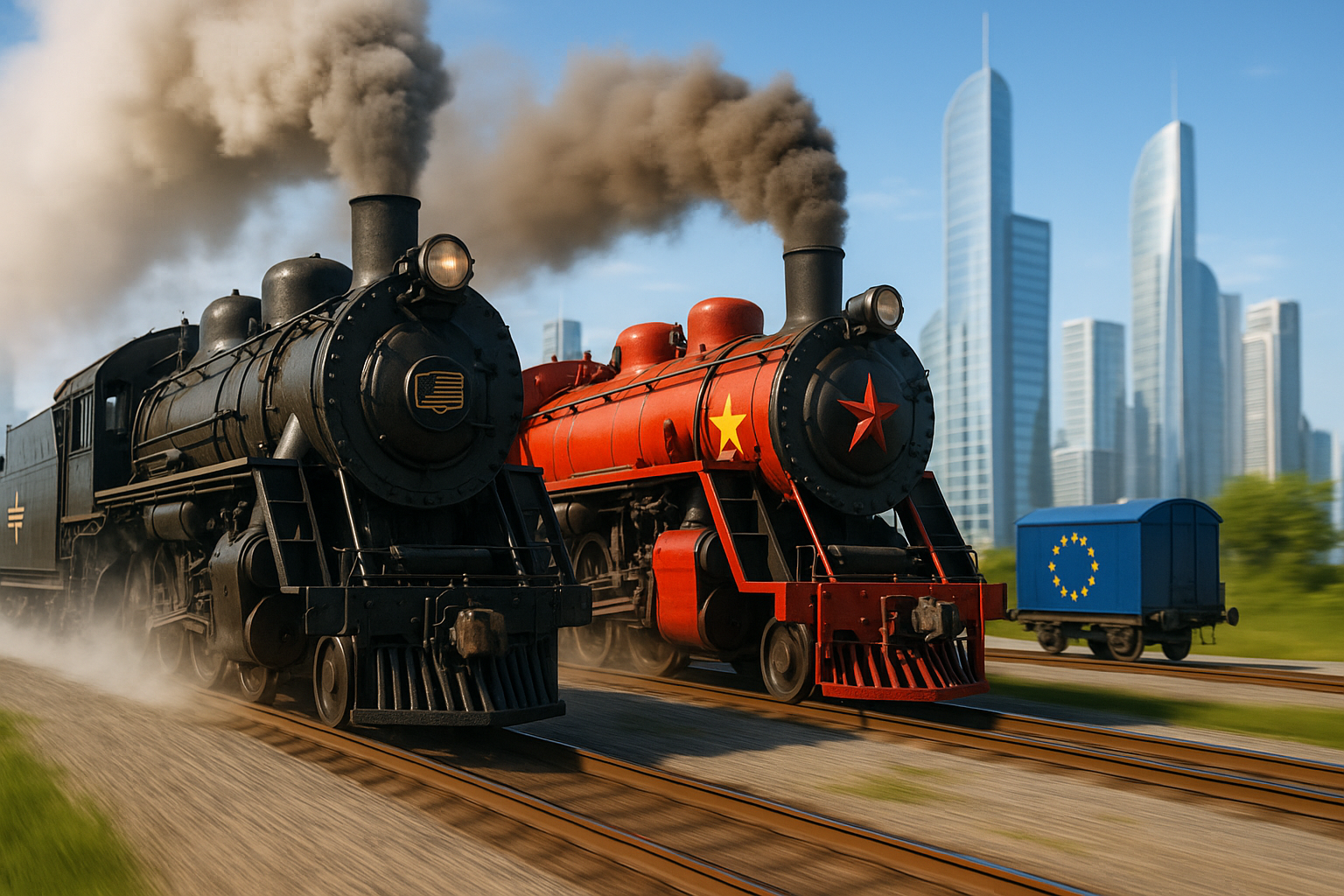From NVIDIA to Neura Robotics: Who is leading the race for new robotics?
The production of physical goods is facing the most profound upheaval since Henry Ford invented the assembly line. This revolution will not only force all traditional manufacturing companies to rethink their processes from the ground up, but will also strike at the heart of all players in mechanical and plant engineering as well as robotics suppliers. Those who do not embrace AI-based automation now will disappear from the playing field.
For decades, KUKA, ABB, and FANUC dominated the market with linearly programmed robots that are perfect at repeating thousands of identical work steps. Highly precise, but rigid and inflexible. Today, however, “precise and reliable” is no longer enough. The new production requires robots that can think, react flexibly, and adapt independently to new conditions – qualities that classic programming simply cannot deliver.
The future belongs to simulations – ones that go far beyond the concept of a simple digital twin. Complete manufacturing processes for individual components or even entire product lines are first created purely virtually, enabling unprecedented complexity and flexibility. NVIDIA is currently leading the way here: with a platform that seamlessly integrates simulation, AI, and real hardware, they are defining the next level of automation – fast, scalable, and amazingly realistic. Traditional competitors have so far only been watching from the sidelines.
Sim2Real: NVIDIA’s master plan for learning machines
NVIDIA is pursuing an integrated, three-step approach to robotics: design – simulation – reality. First, virtual twins of the robots and their environment are created as precise digital replicas. These digital models form the basis on which the AI models are trained and further developed.
Then comes the crucial step: realistic simulation. NVIDIA uses platforms such as Isaac Sim and Omniverse, in which AI systems (primarily through reinforcement learning) can play through millions of scenarios – completely virtually. The robots gather experience, learn from mistakes, and improve their decisions in record time. All without expensive hardware or real risks.
In the final step, these highly optimized models are then transferred directly from the simulator to real hardware such as the NVIDIA Jetson module. Thanks to this seamless “Sim2Real” integration, robots are immediately ready for use and continue to improve during operation. The time between idea and deployment is dramatically reduced – a real game changer.
NVIDIA dominates: fast, scalable – and expensive
Precisely here is where NVIDIA currently has a huge competitive advantage over other providers: the close integration of AI, simulation, and hardware enables unprecedented development speed and scalability. Robot projects that used to take months or even years can now be realized in weeks or even days. This means massively lower development costs combined with greater flexibility and security.
NVIDIA is cleverly exploiting this market position and is well rewarded for its unique technology architecture: a typical GPU costs around USD 4,000. However, it is the software stack that makes it really lucrative: NVIDIA charges an additional USD 7,000 per GPU per year, directly capturing a significant portion of the customer benefit in the form of hefty margins. It’s a model that traditional robot manufacturers can only dream of.
How KUKA, FANUC, and ABB risk missing out on the robotics revolution
Traditional robot manufacturers such as KUKA, ABB, and FANUC have spent decades perfecting their linear, deterministic systems. Precise and reliable? Definitely. But adaptability and genuine learning from data and experience have never been part of their DNA.
This is now coming back to haunt them: while traditional robot suppliers have virtually been stagnating with meager growth rates of less than 5%, according to McKinsey, the market for AI-based and software-driven solutions has exploded by a whopping 25% annually. The reason: industrial manufacturing today demands robots that can respond flexibly to changes and make decisions independently – capabilities that traditional hardware is completely unable to deliver.
The problems lie not only in the technology, but above all, deep within the corporate culture. The leap from a hardware-focused business model to software-centric, data-driven solutions is extremely difficult for established manufacturers. This is particularly evident at KUKA: despite decades of experience and technological excellence, the company has not yet succeeded in developing a convincing AI strategy. Internal resistance is too strong, and the urgently needed AI and software skills are too thinly spread. (Source: https://automationspraxis.industrie.de/news/kuka-der-weg-zur-einfachen-robotik-fuehrt-nur-ueber-ki/ )
Traditional providers are thus in danger of making the same fatal mistake as Nokia or Kodak once did: they are clinging to proven recipes for success and overlooking the fact that their products – despite their perfection – are simply no longer compatible with the rules of an AI-driven world. Those who fail to change course radically now could soon be history.
What’s more, the classic business models of traditional providers – selling hardware with subsequent maintenance services – are not compatible with managed service or SaaS models, which are increasingly in demand thanks to AI-based robotics.
Siemens, AWS & Google: Who will win the platform war for robotics?
The world of robotics is moving inexorably toward cloud-based AI platforms. Siemens (Tecnomatix), AWS (RoboMaker) and Google (Gemini Robotics) are racing to see which approach will become the standard in the future. Each player has its own strengths: AWS and Google are focusing on scalable cloud environments with an emphasis on AI, while Siemens scores with industrial experience and close integration into existing production processes.
However, the real frontrunner at the moment is NVIDIA. This is because NVIDIA is the only provider to combine an end-to-end architecture consisting of its own hardware (GPUs), realistic simulation (Isaac Sim) and powerful AI frameworks. This combination gives them a huge advantage: robotics solutions can be developed faster, more realistically and more cost-efficiently than by competitors who are either purely cloud-based or strongly industry-specific.
What’s interesting is that NVIDIA is in a complicated “frenemy” relationship with cloud giants AWS and Google. Although they compete for market share, AWS and Google use NVIDIA GPUs extensively in their own data centers. This mutual dependence between cloud providers and GPU manufacturers ensures stability in the short term, but tension and uncertainty in the long term. Because one thing is clear: as soon as strong alternatives establish themselves, the friendly truce could quickly come to an end.
NVIDIA still dominates – but the next robotics revolution is already well underway
NVIDIA currently sits firmly on the robotics throne. But innovative challengers are already waiting in the wings: young providers such as Boston Dynamics, NEURA Robotics, and Agility Robotics embody a new generation of robotics that is shaking up the market with adaptive AI systems, flexible autonomy, and its own intelligent sensor technology (perception).
Although these new players are still heavily dependent on NVIDIA today (using GPUs and software components such as Isaac Sim) a decisive trend reversal is emerging in the long term: independence through real data. Next-generation robots continuously generate their own data during operation, exchange it with each other and thus develop a kind of swarm intelligence. This enables them to learn from each other continuously, refine their models independently, and become less reliant on virtual simulations in the future. Boston Dynamics, for example, is networking its Spot robots into intelligent fleets that immediately use and pass on knowledge gained from real-life situations. Agility Robotics is pursuing a similar approach with its Digit robots, which integrate experience from real warehouse environments directly into their AI models.
And NEURA Robotics is developing standardized autonomous skills that enable robots to perceive their environment in real time and act with according intelligence.
For NVIDIA, this poses a real risk in the long term: the more autonomous and data-driven the young providers become, the easier it will be for them to break free from their current dependence. The exciting question is: how long will NVIDIA remain irreplaceable – and when will the crown start to wobble?
Data instead of dependency
The young robotics providers are pursuing a clear strategy to build their future independently of NVIDIA: They collect real, operational data, develop their own perception capabilities, and are increasingly relying on independent AI models that they continuously improve through collaborative learning (“swarm intelligence”).
Specific examples of this are:
· Boston Dynamics: The networked “Spot” robot fleet shares information directly at the point of use, improving AI models and reducing dependence on external simulations in the long term.
· Agility Robotics: The Digit robots continuously integrate experience from real warehouse and logistics environments into their AI models, thereby building increasingly precise autonomous capabilities.
· NEURA Robotics: Development of standardized “skills” that enable robots to perceive their environment in real time and respond intelligently – completely independently of NVIDIA training sets.
At the same time, these providers are already testing alternative AI chip platforms such as the Qualcomm Robotics RB series, Intel Movidius, and AMD Embedded chips to reduce costs and further increase independence. Agility Robotics is evaluating Qualcomm-based hardware, while Boston Dynamics is intensively testing chips from Intel and Google’s TPUs.
For NVIDIA, this trend poses a real risk in the long term: While dynamic startups are becoming increasingly independent and tapping into new markets, NVIDIA remains increasingly limited to traditional robotics transformation customers – in other words, the dinosaurs. This is a market that could become smaller and less lucrative in the medium term than NVIDIA is willing to admit today.
Conclusion: Who will shape the future of robotics?
Linear robotics has had its moment in the sun. With its chips and end-to-end software stack, NVIDIA has laid the foundation for the transformation of an entire industry – but the future belongs to new, AI-driven players such as NEURA Robotics, Boston Dynamics, and Agility Robotics. These providers are now gaining market share and have a realistic chance of breaking free from NVIDIA’s AI dominance. Independent data platforms and autonomous AI models are fundamentally changing the market logic.
Traditional market leaders such as KUKA, ABB, and FANUC must urgently and radically change course, otherwise they run the risk of being displaced by more agile players and disappearing into insignificance despite their perfect technology.
Industrial customers should therefore test the new AI-based robotics concepts as quickly as possible. Those who gain practical experience now will secure decisive competitive advantages at an early stage.
Entrepreneurs in the automation industry must recognize that trusting the old market leaders has become risky. The future belongs to new, data-driven providers who make robotics flexible, autonomous, and capable of learning. Completely new integrators will also emerge: providers who use industry-specific know-how and digital skills to bridge the gap between traditional industrial experience and innovative AI solutions.
Finally, investors should focus on the trends that will dominate the robotics market in the future: standardized robotics skills, platform-like app stores, and intelligent AI data models. Software will become more universal and less manufacturer-specific, opening up completely new markets for software and managed services. This holds enormous potential for those who invest wisely early on.
The robotics industry is facing a radical transformation that will shape at least the next 5 to 15 years. In this complex market, it is not the first to start who wins, but those who remain flexible, diversify wisely, and recognize the right moment to act. Right now is the moment when it’s being determined how goods and products will be made in a connected and globalized world tomorrow.



